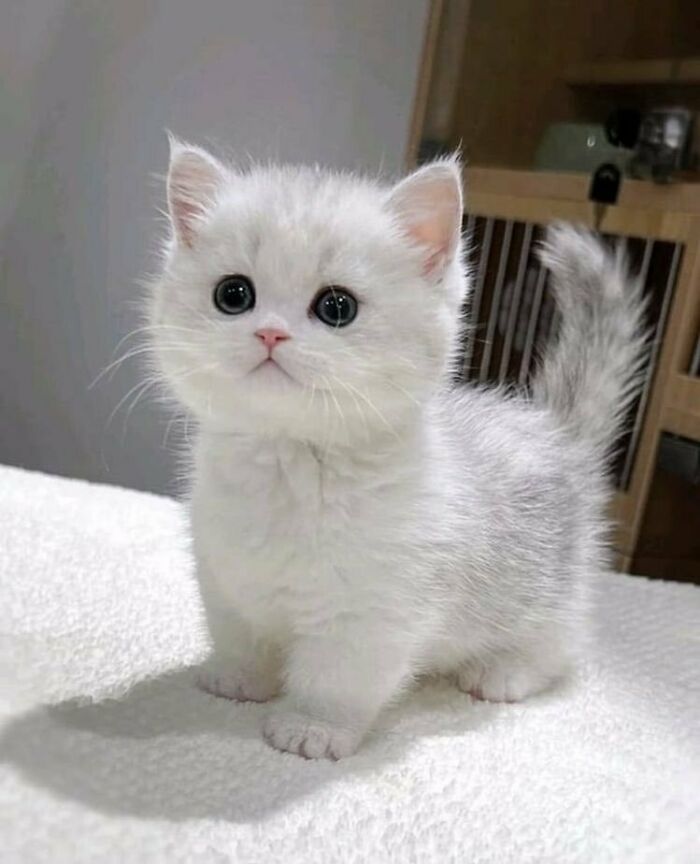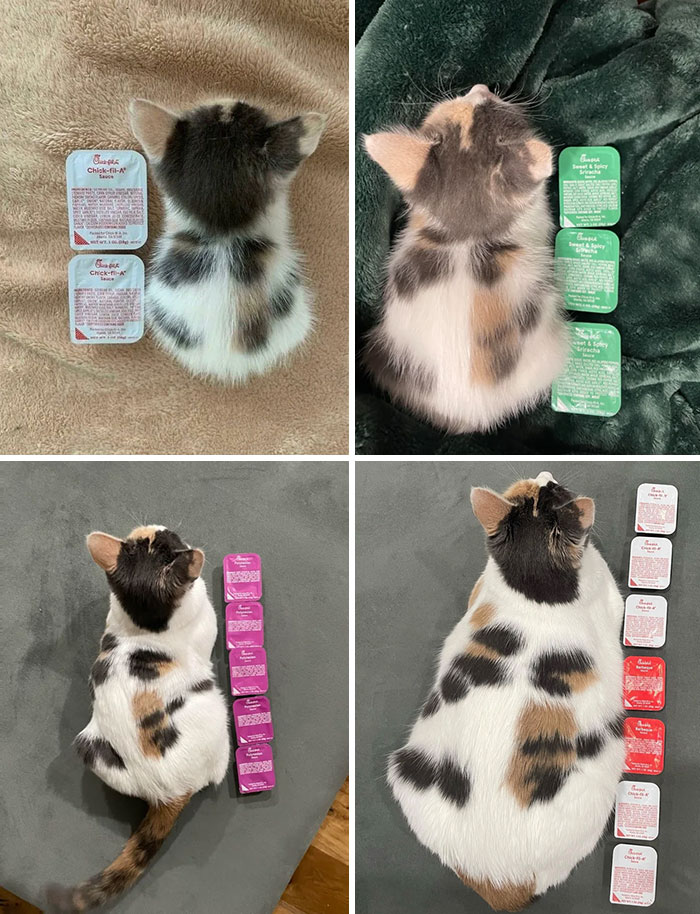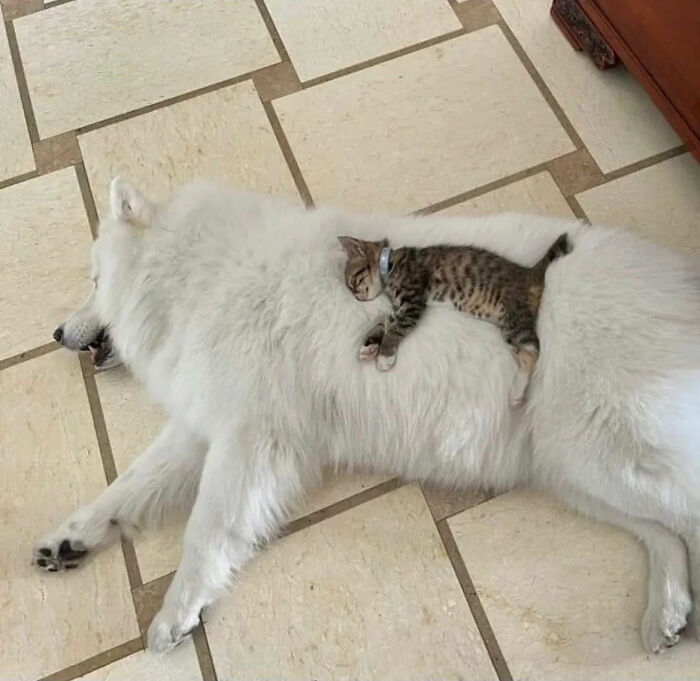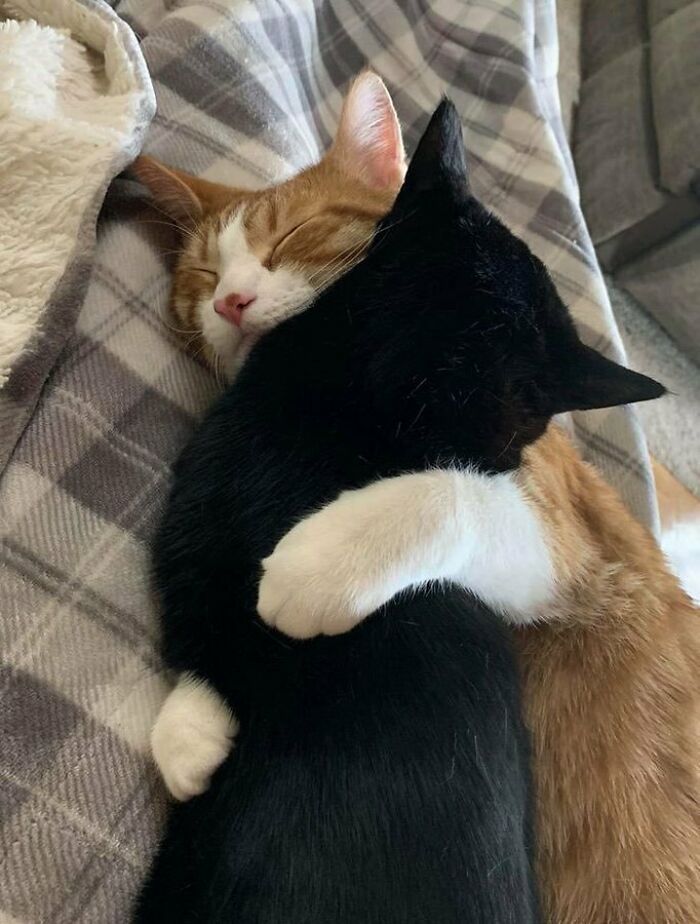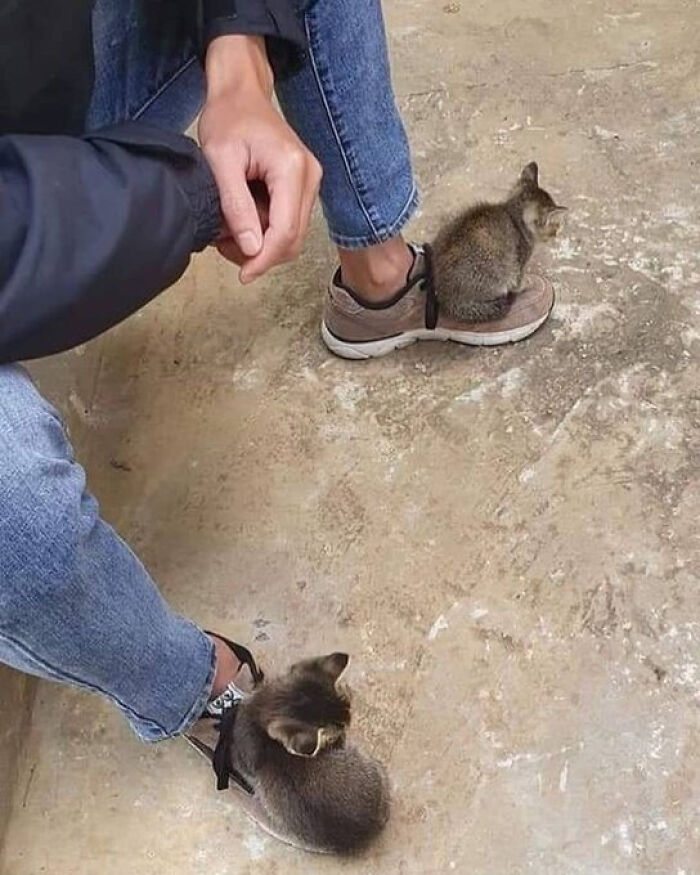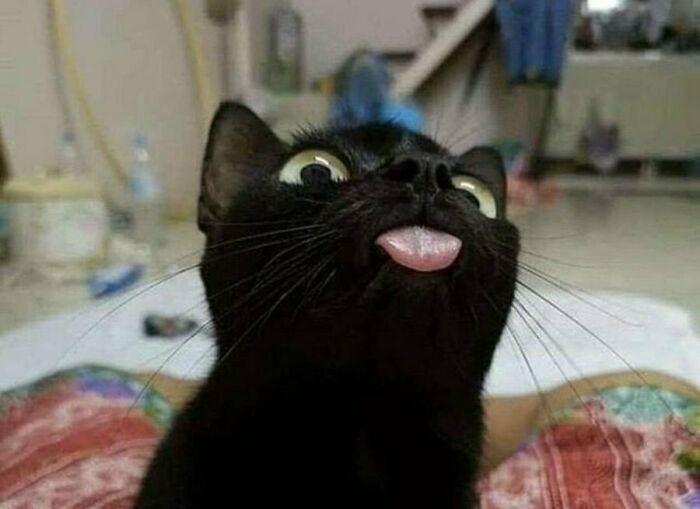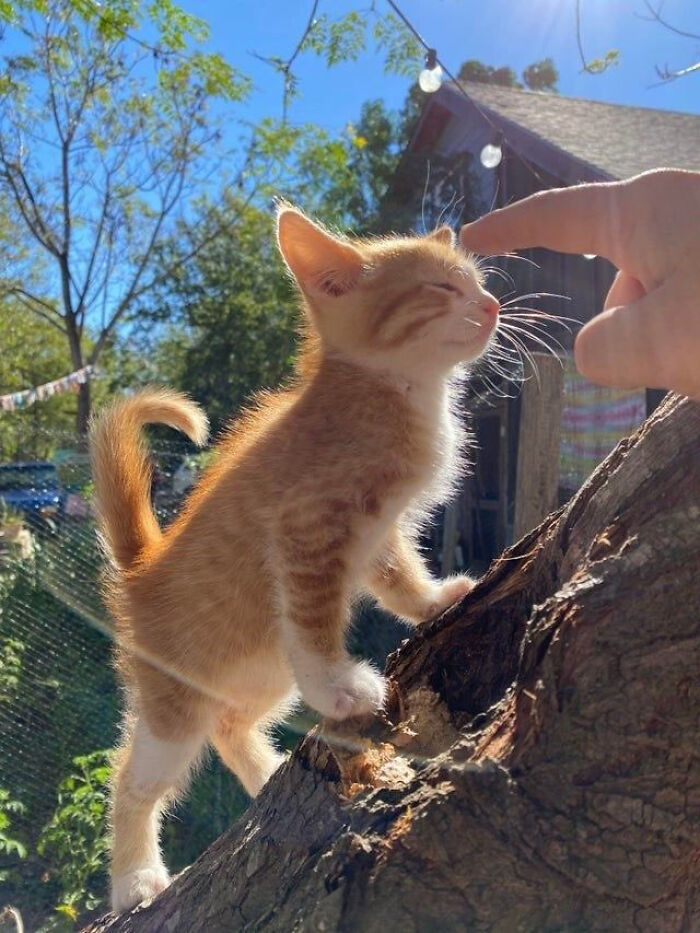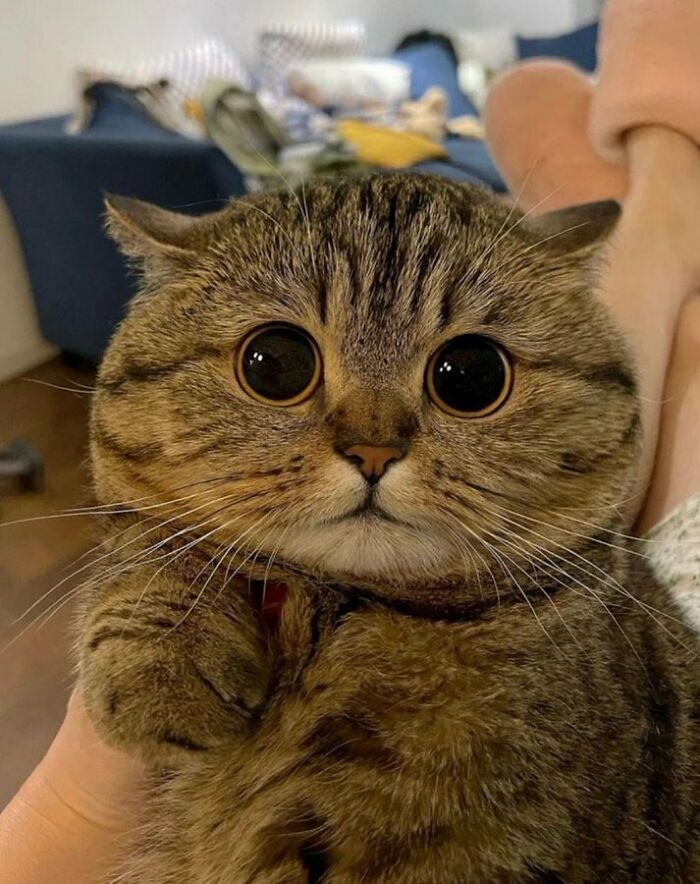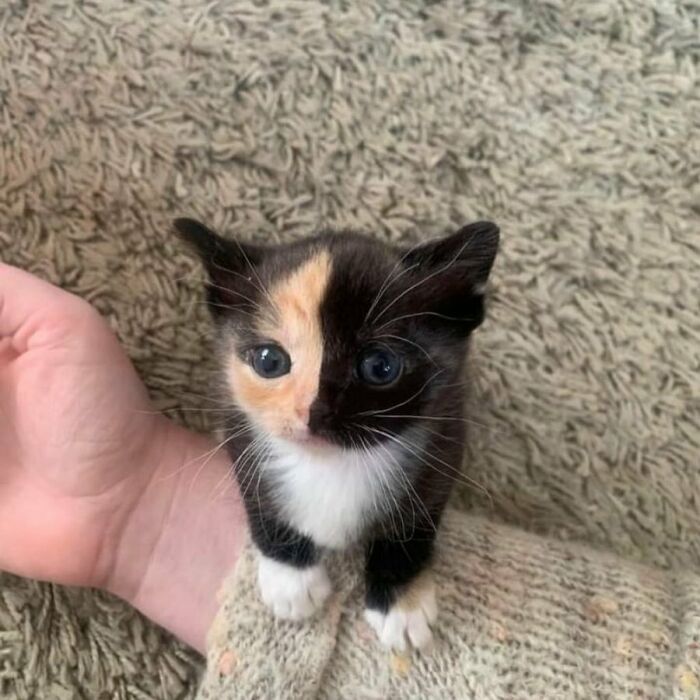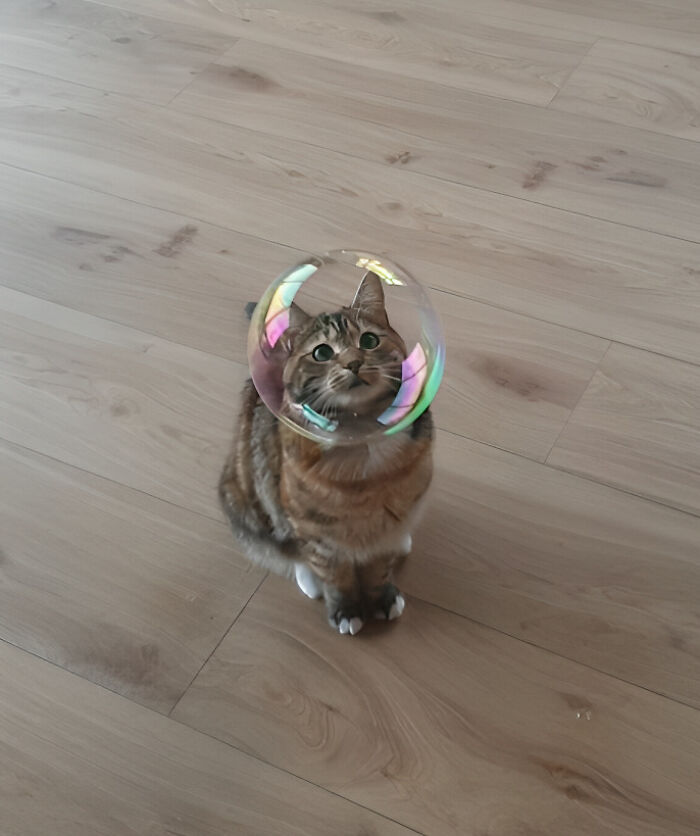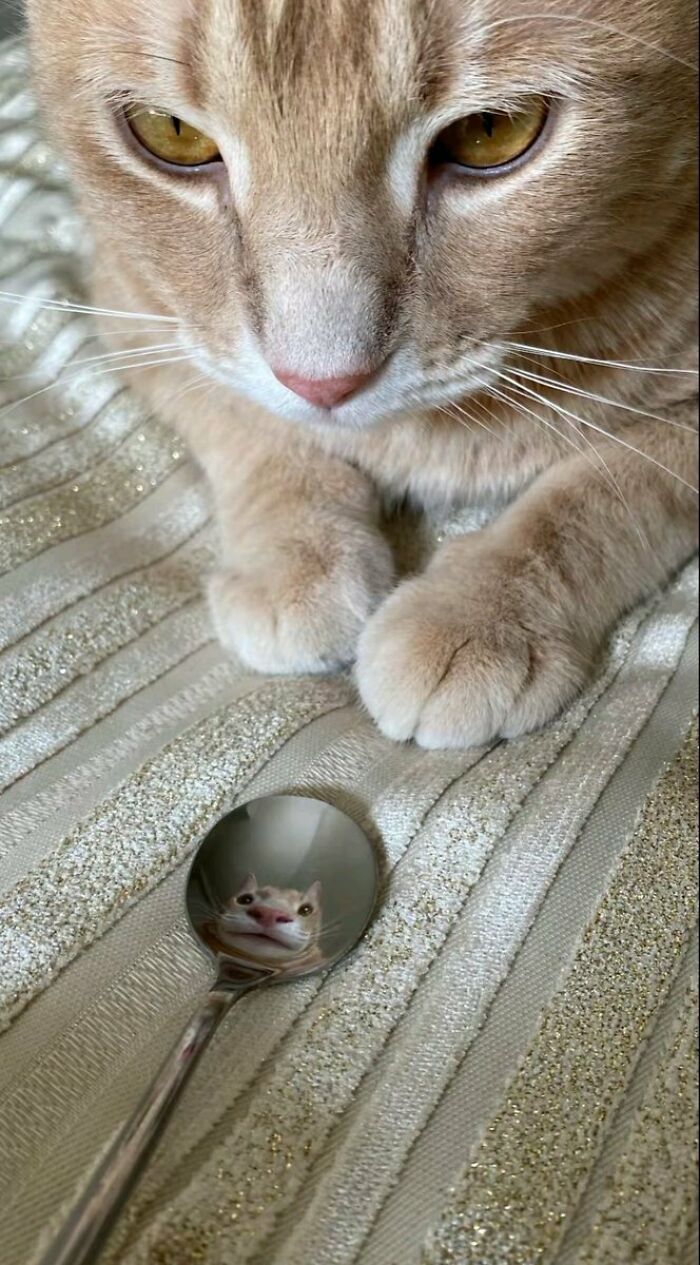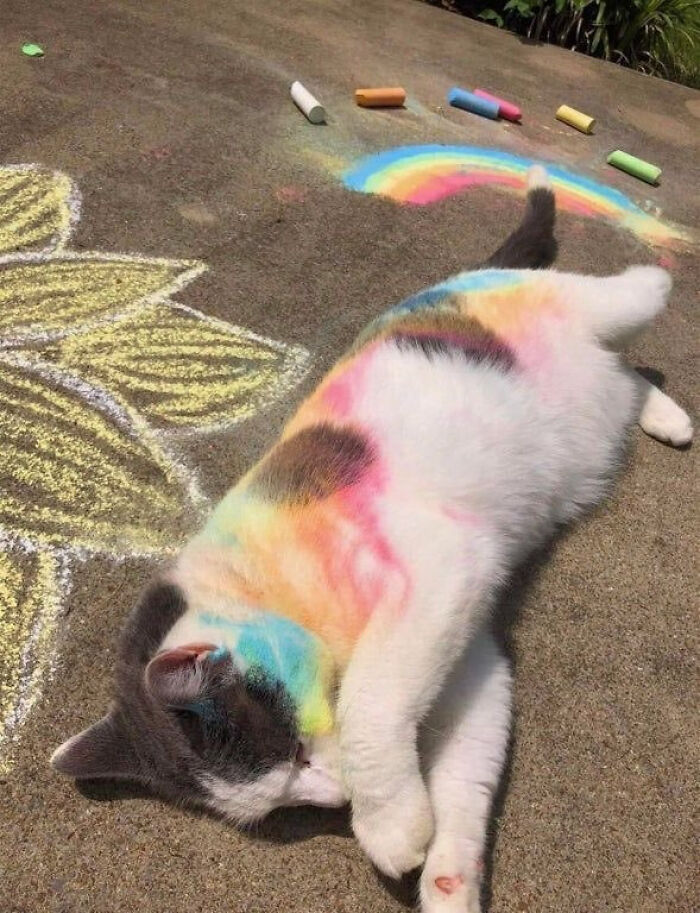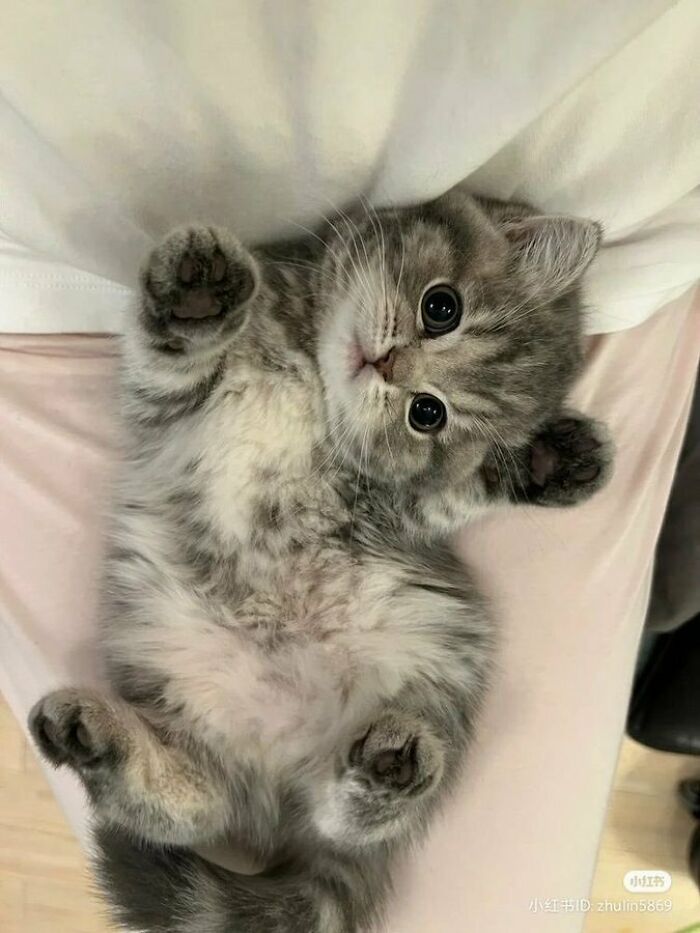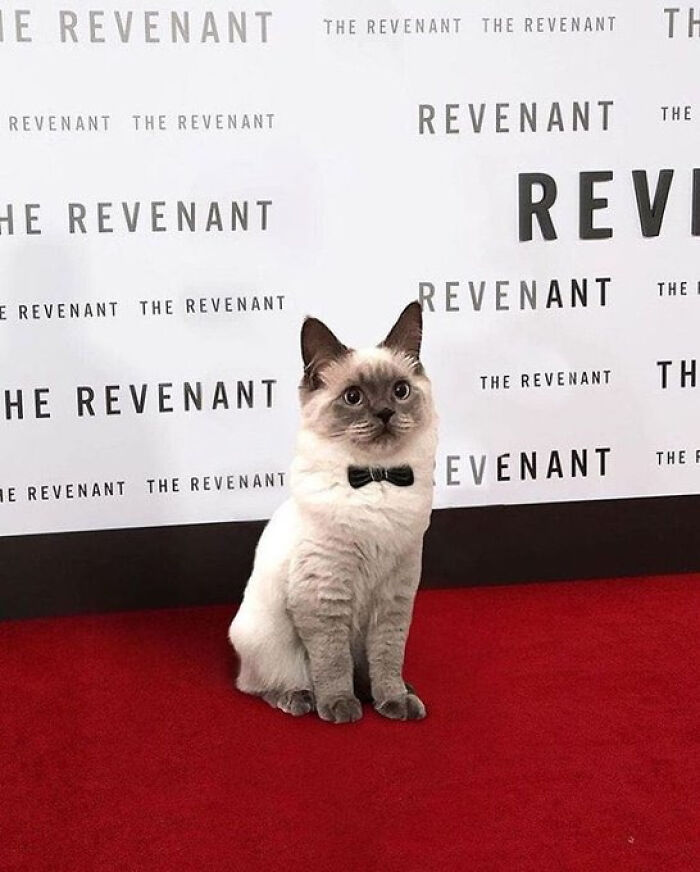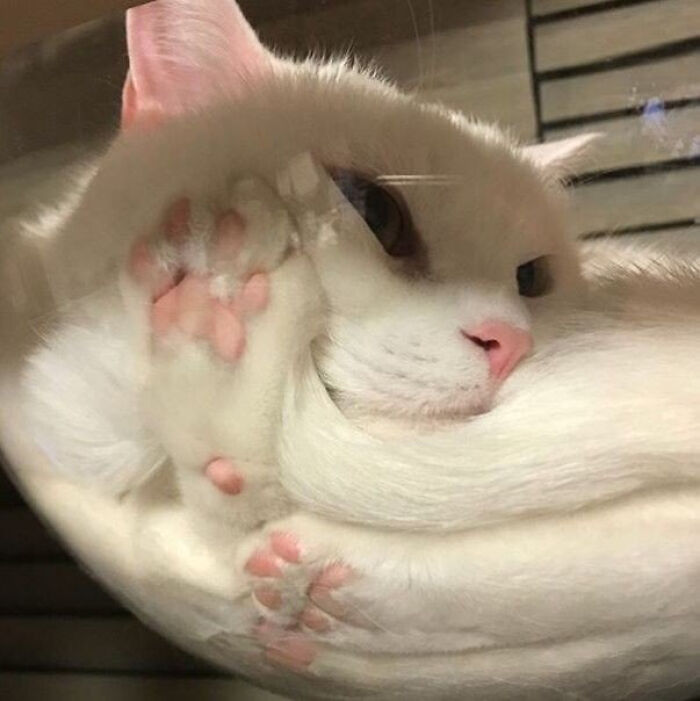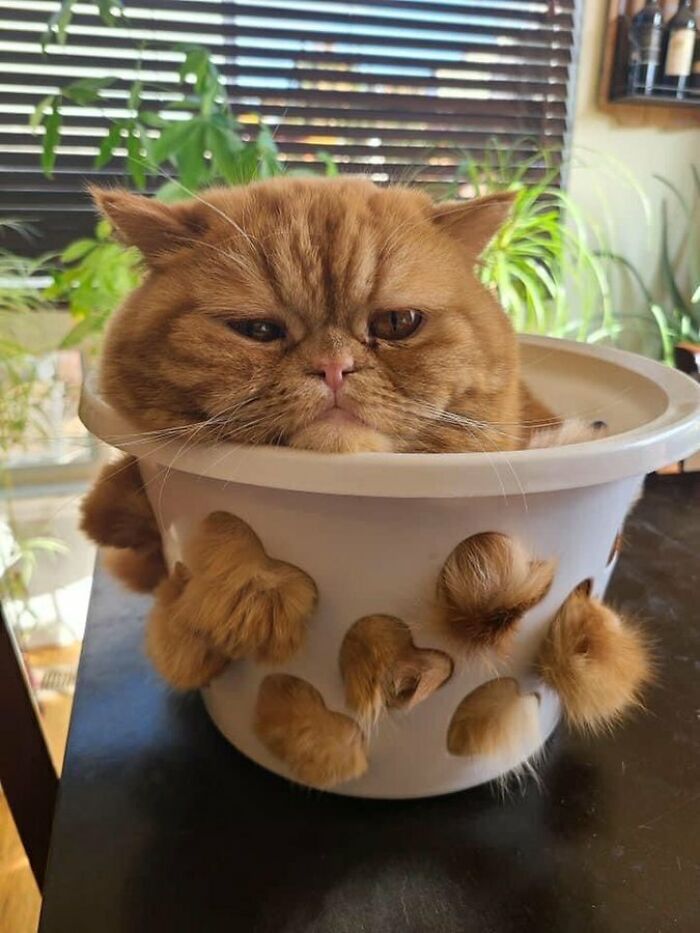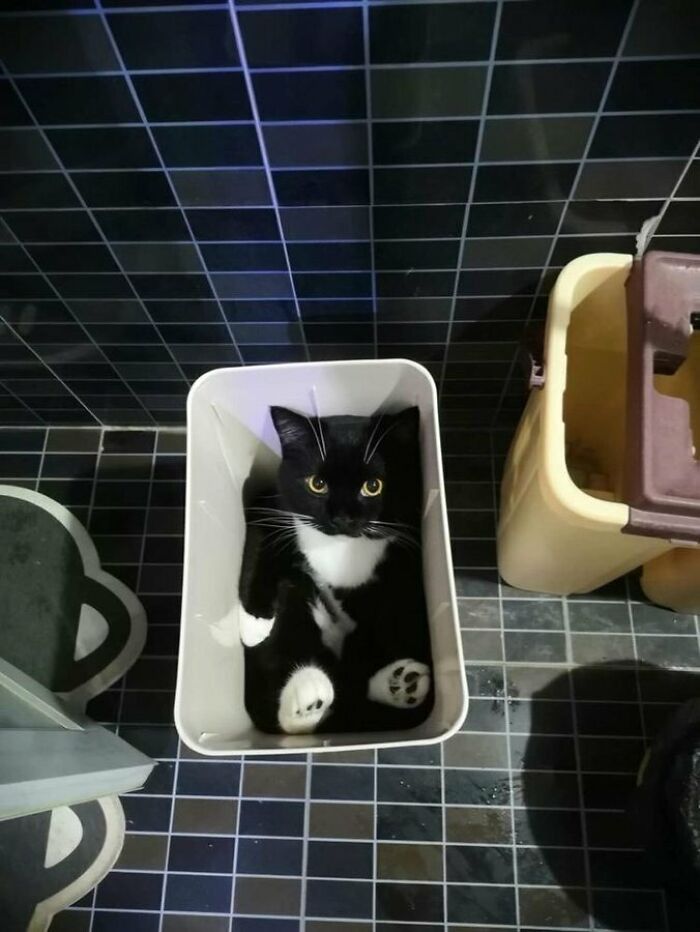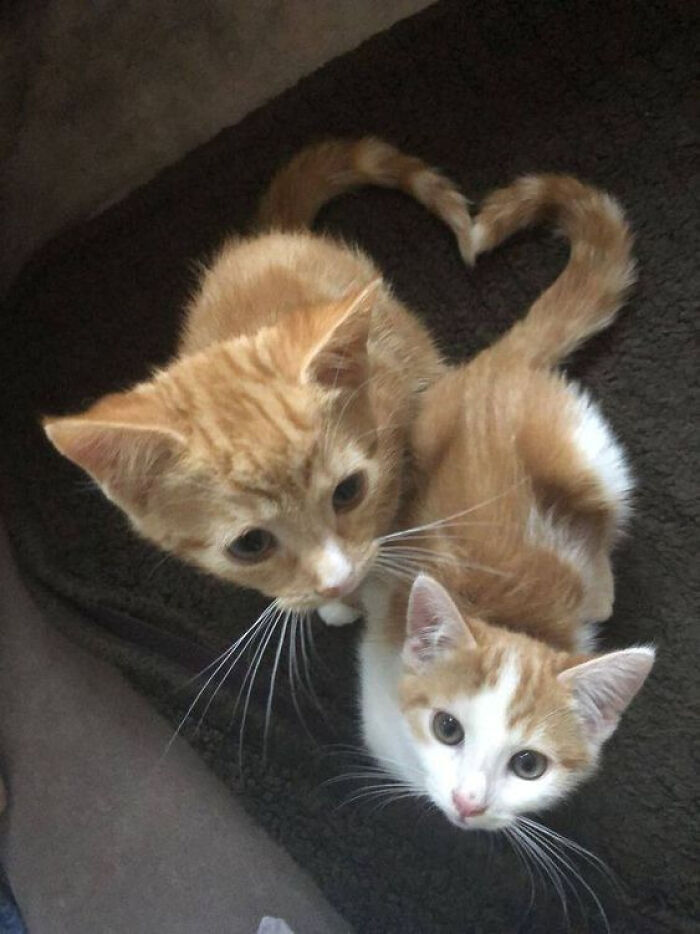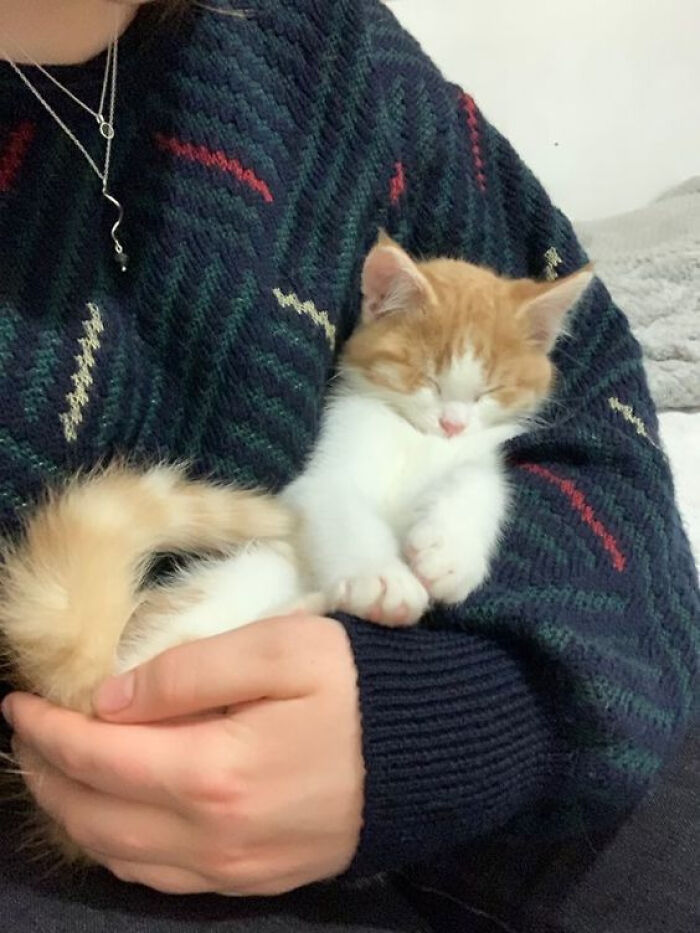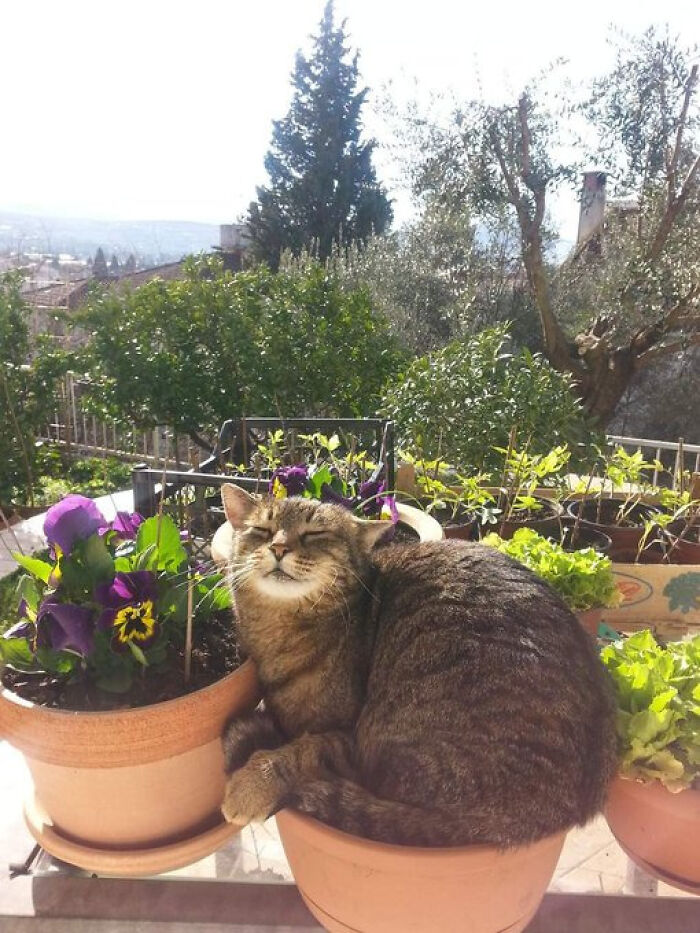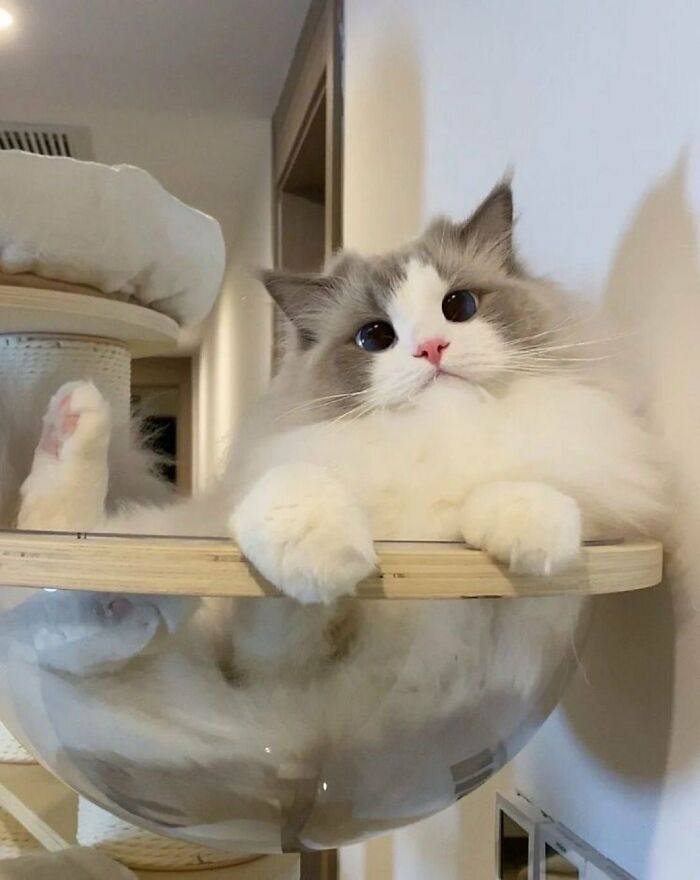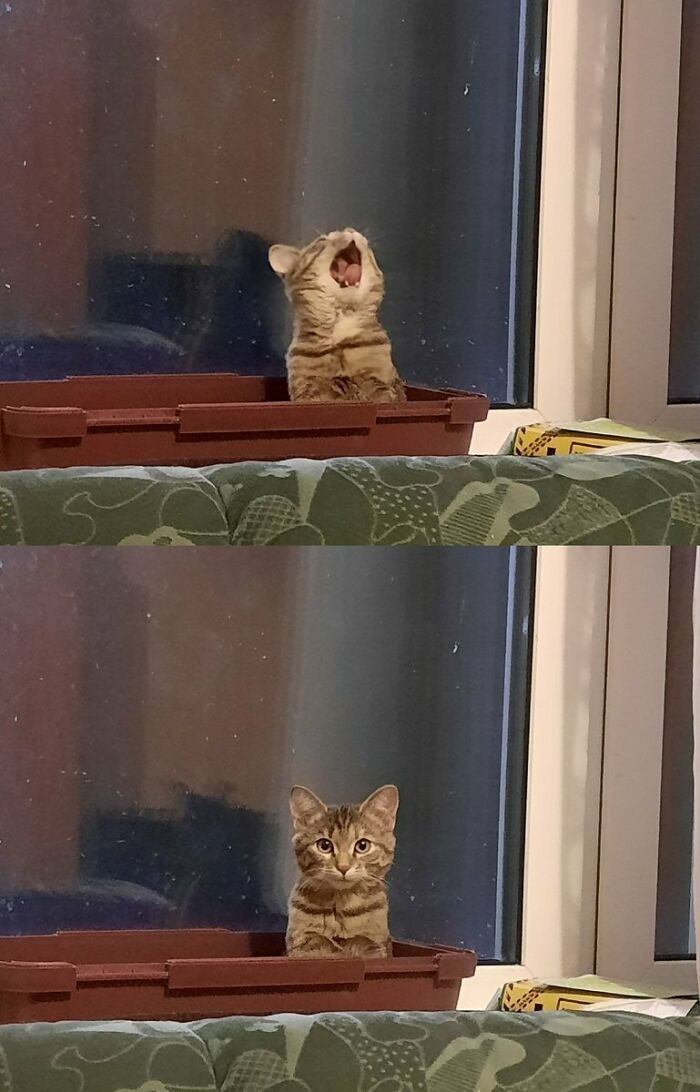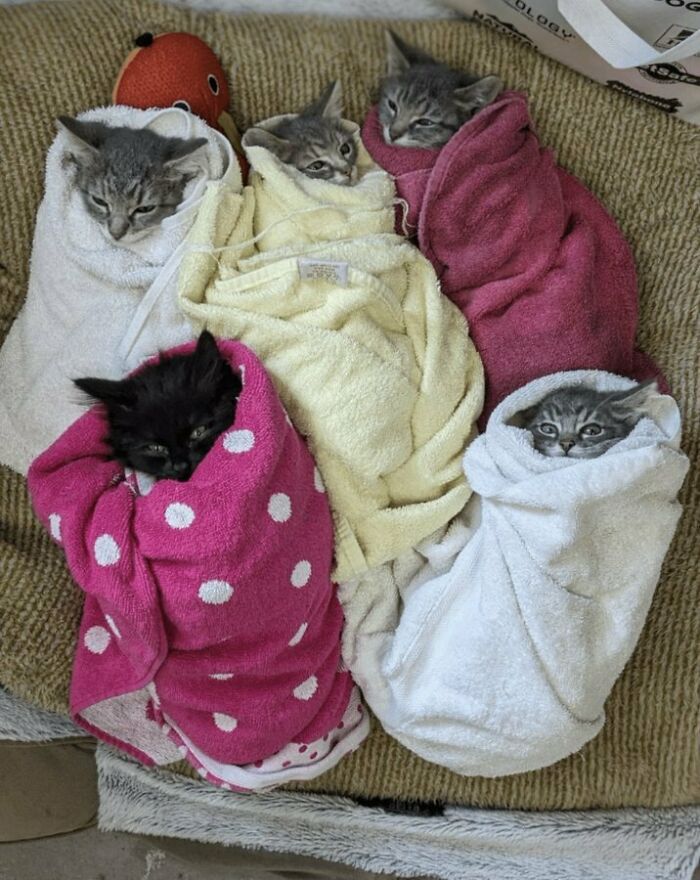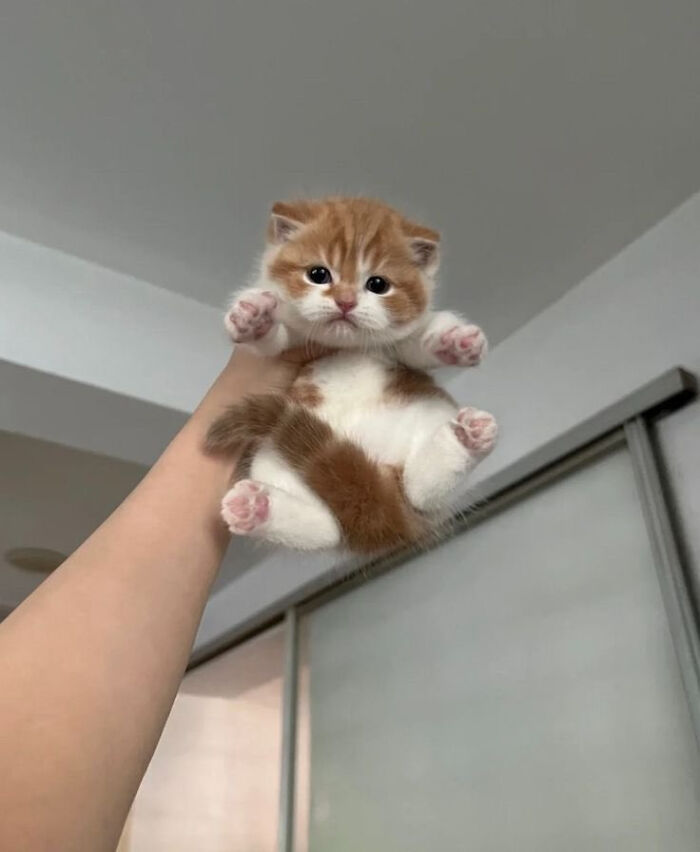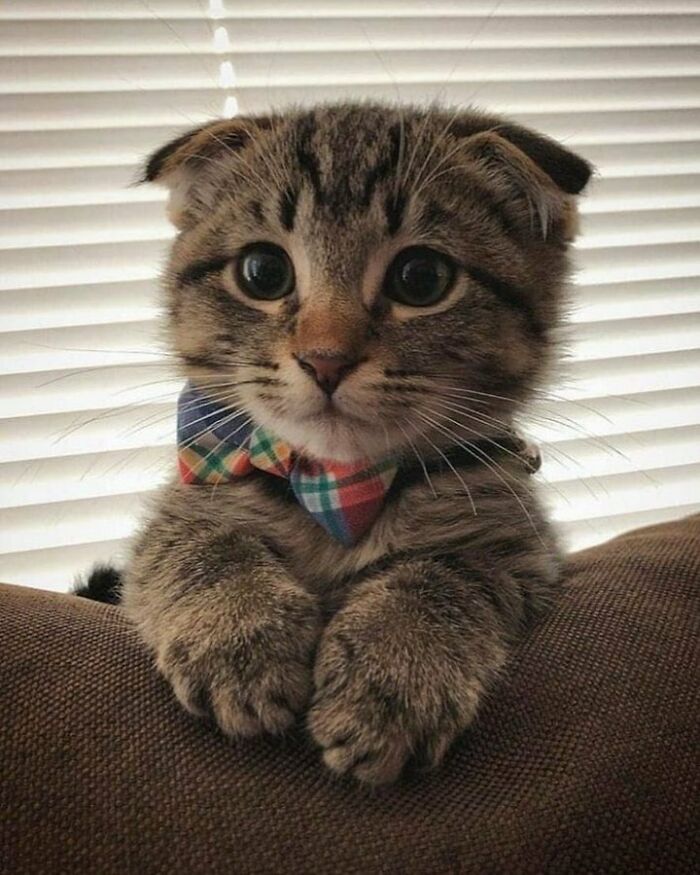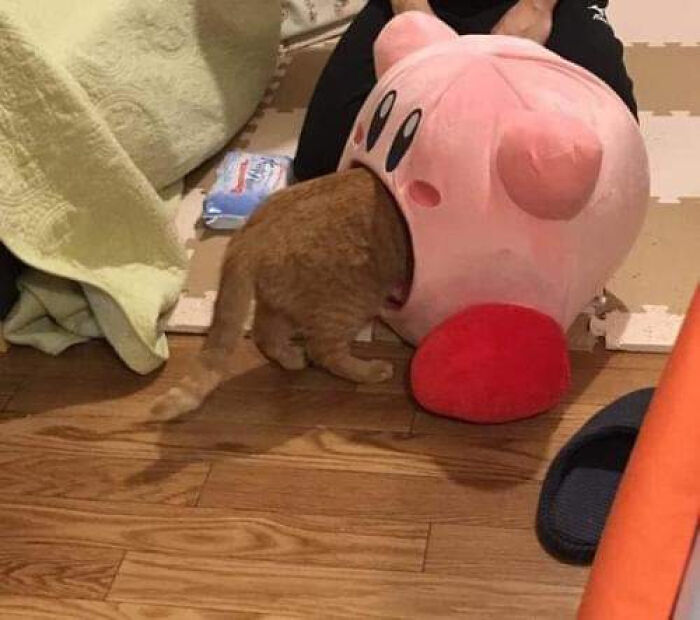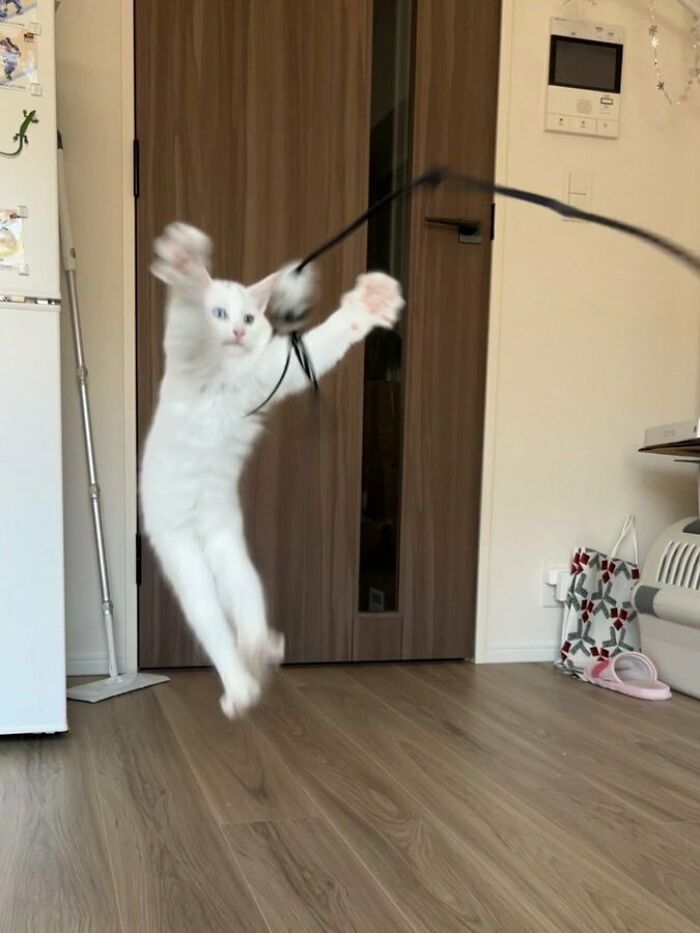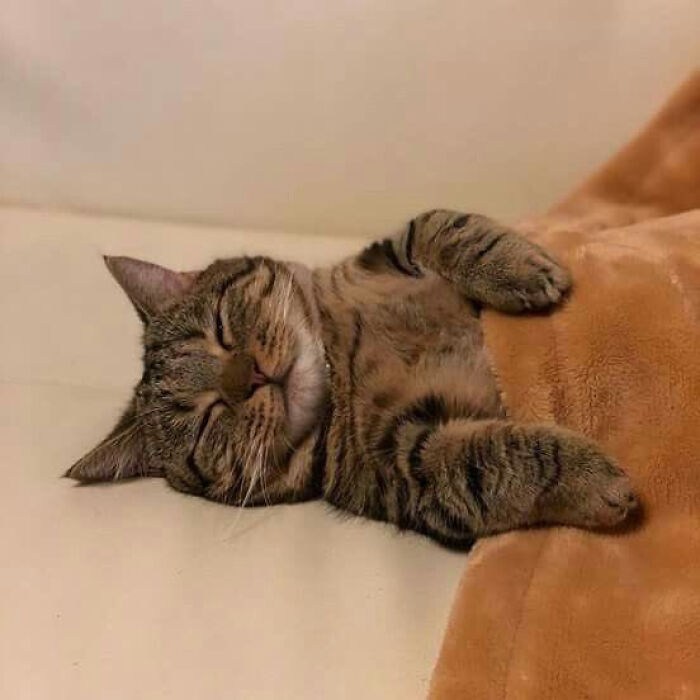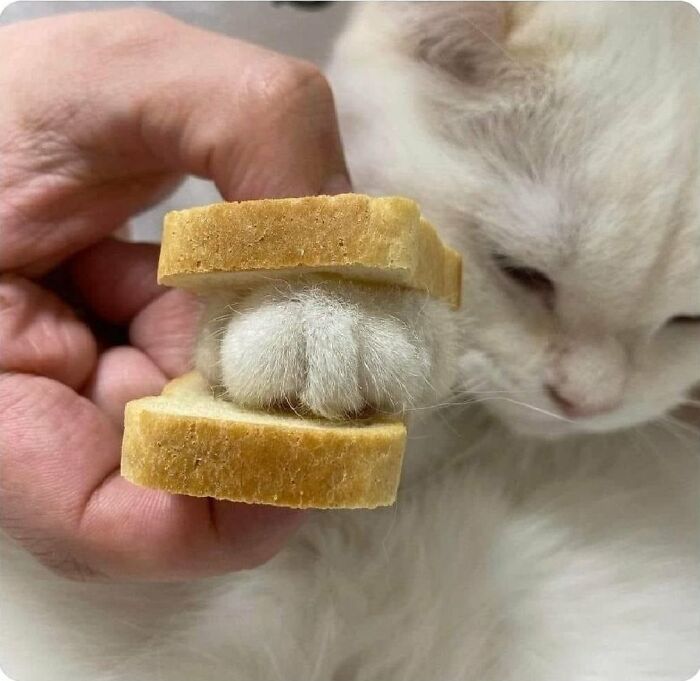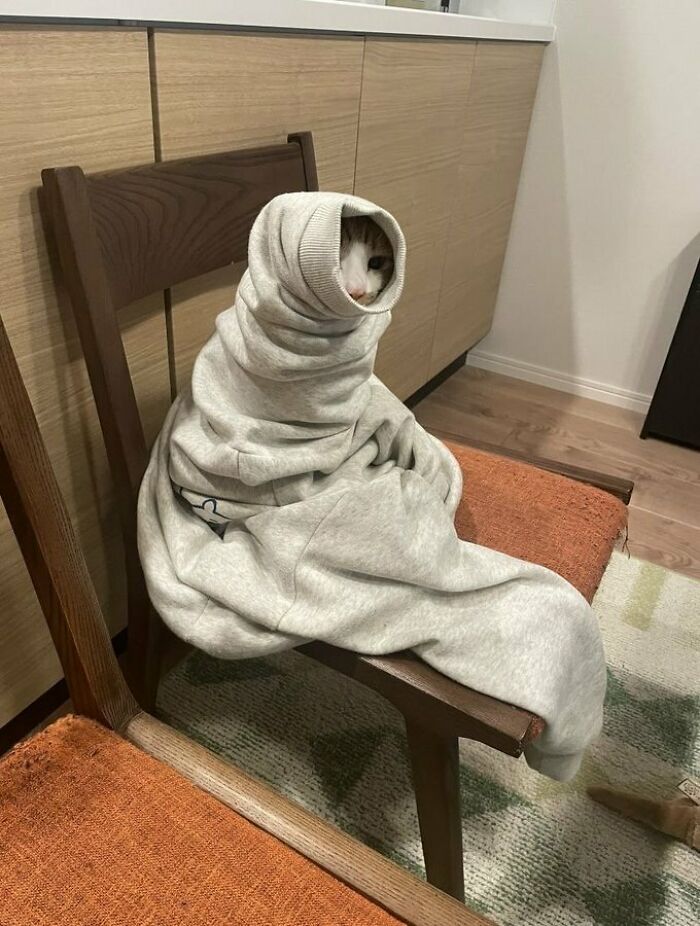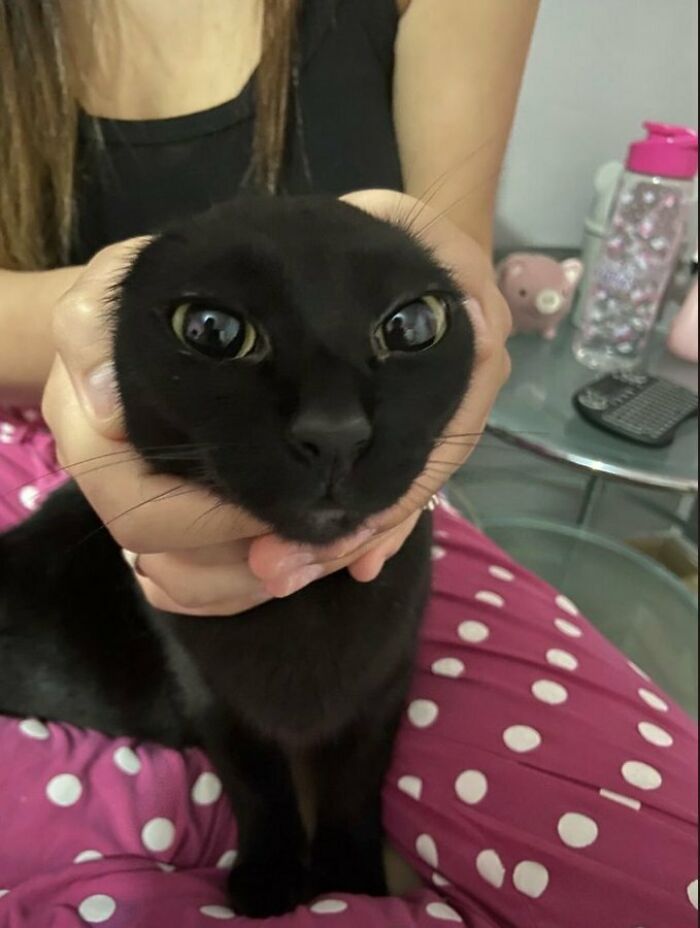We, as people, were blessed with adorable, cute, yet complex companions, cats. What’s not to adore about a miniature tiger that loves to purr and lay in the sun and who can comfort us when things get tough?
This unique affection for cats seems to be only amplified on the internet, where their quirky and funny behavior takes center stage. And since we will never be bored of their antics, social media accounts such as “Why You Should Get A Cat” on X were born. The compilation of cat images below serves as a compelling invitation to consider welcoming a cat into your life if you haven’t already.
However, while it’s now pretty common to have a cat as a household pet, people still tend to wildly misinterpret their behavior, which leads to various issues. To tackle this subject, Bored Panda reached out to Jules dos Santos, a cat psychologist, and cat behaviorist at Catwhispering, and founder of Luxury Cat Lodge, and a professional qualified cat behaviorist Jane Ehrlich at Cattitudebehavior. Read the full interviews with Jules and Jane below.
More info: luxurycatlodge.com.au | catwhispering.com.au | ninthlifefoundation.org | cattitudebehavior.com
#1
Image credits: WhyShouldGetCat
#2
Image credits: WhyShouldGetCat
#3
Image credits: WhyShouldGetCat
Luxury Cat Lodge, run by Jules de Santos in Australia, is a boutique cat hotel that offers beautiful rooms and professional care for feline friends while they are away from home.
Besides establishing a cat hotel, Jules qualified as a veterinary nurse and holds an advanced diploma in advanced feline behavior and cat psychology. We asked Jules to share her perspective on the unique psychological characteristics of cats and how understanding them can benefit potential cat adopters and current cat owners.
“Understanding cats and assisting owners and potential cat adopters to understand cats is 100% of what I do as a cat psychologist. I do not ‘train’ cats like a dog trainer would train a dog. Instead, I assist people in understanding their innate behaviors, both natural and nurtured traits. Once one understands ‘why’ cats do what they do, then a co-habit and behavior modification plan can be implemented. Sometimes, the modification plan is for the owner, not the cat! Once they change their behaviors, the cat changes theirs! It is critical to understand cat psychology.
My perspective on cats’ characteristics is that they are grossly misunderstood. I marvel at their multifaceted, unique characteristics, and I continued to be saddened at how owners can not comprehend that they are not human babies, nor are they a dog,” wrote Jules.
#4
Image credits: WhyShouldGetCat
#5
Image credits: WhyShouldGetCat
#6
Image credits: WhyShouldGetCat
Given Jules’s background as a cat psychologist, we wanted to know what are some common behavioral challenges that cat owners might face, and how adopting a cat addresses or mitigates these issues. Jules shared: “The most common behavioral problems are inappropriate elimination, e.g., urinating outside the litter tray, and aggression, both inter-cat aggression and towards owners. It is interesting that you ask this question as I also have founded a cat charity that rescued aged and high-care cats. I have found that most cats surrendered for inappropriate urination will not perform these behaviors in their new homes, proving my theory that this undesired behavior trait is nearly always (when it is not a medical cause) due to environmental factors.
Conversely, aggression is complicated and can take several hours or weeks to work through the underlying cause. Most often, the owner has failed to ‘understand’ the cat.”
#7
Image credits: WhyShouldGetCat
#8
Image credits: WhyShouldGetCat
#9
Image credits: WhyShouldGetCat
With Jules’s experience in rehabilitating cat behavior problems, we asked her to provide examples of successful cat-owner relationships that were improved through her intervention.
“I have some beautiful stories that make my job so worthwhile. One story I have lovely memories of is a bonded pair of Bengal siblings who acutely turned on each other. Bizarre is an understatement, and I never understood what caused the acute turmoil between the pair. They went from curled up together and grooming each other to quite literally wanting to kill each other. Thankfully, the owner was dedicated and determined to bring them back together. I tried for months before suggesting they come into my cat hotel for an extended boarding and slow re-introduction. It worked, and I have beautiful photos of them still today curled up together like the good old days!”
#10
Image credits: WhyShouldGetCat
#11
Image credits: WhyShouldGetCat
#12
Image credits: WhyShouldGetCat
We also asked Jules to share why she thinks it’s important for potential cat owners to be educated about feline behavior before adopting a cat, and how can this knowledge leads to more fulfilling relationships between cats and their owners. Jules wrote: “It is imperative that cat owners educate themselves for so many reasons, mainly that they understand that cats are not always the ‘easier’ pets. They require daily litter tray changes, for example. Moreover, they are not a dog and show affection differently from dogs; thus, understanding the differences between the species is just as important. Understanding cats and their behaviors will bring acceptance and awe for this beautiful creature and significantly enhance the bond between owner and pet.
Lastly, not only understanding the behaviors but also the differences in the breeds is equally essential. I see a common behavior problem with Bengals, essentially wild cats in a domestic home. Researching the different traits will help marry up perfect matches between owner and cat(s).”
#13
Image credits: WhyShouldGetCat
#14
Image credits: WhyShouldGetCat
#15
Image credits: WhyShouldGetCat
As the former director of boarding and pet care services for the Pet Industry Association Australia, Jules also shared how she envisions the future of cat welfare and responsible cat ownership, and what role she sees herself playing in shaping that future.
“I am no longer the director of boarding and pet care services for the Pet Industry Association Australia. However, I am thrilled with the upward trend in cat welfare and responsible cat ownership. When I started my career as a veterinary nurse 25 years ago, cats were kept in the backyard and fed twice a day. Today, cats are valued family members who are owned and loved like family members. Their ‘welfare’ is being understood, and in turn, it has been considered in all aspects of the cohabiting lives between people and cats.”
And lastly, Jules added: “I am also seeing an upward trend in adoptions over the years, with fewer and fewer breeds of cats in my hotels and more rescued cats. The word is getting out there that the former disturbingly high euthanization rates were unacceptably high, and people are realizing that change needed to occur. I believe this is thanks to the Animal Justice Party and Animals Australia, who have driven incredible changes to adoption and euthanasia rates in both dogs and cats.”
#16
Image credits: WhyShouldGetCat
#17
Image credits: WhyShouldGetCat
#18
Image credits: WhyShouldGetCat
Jane Ehrlich, who has 40 years of experience and professional training with an academic, clinical, and shelter background, shared from her point of view on why someone should consider adopting a cat.
“Appreciate her general personality. General. Each cat truly has its own. And no, despite the very limited research on personality and breed, in 40 years as a cat behaviorist, I’ve found plenty of exceptions; not all calicos are sassy, and not all gingers are assertive. And ignore the myths, such as ‘Cats are easier to care for.’ Nope. They may be less obvious about showing their needs (remember, they’re nature’s survivors: display less, observe more), but they need good healthcare and nutrition, a stimulating environment, attention to their often subtle body language meaning, loving and 100% positive guidance, play… just for a few if you’re not naturally, instinctively drawn to cats, don’t get one! They’re not toys, fashion statements, dolls, or ‘to have something pretty and alive around the place’. (Yes, I’ve heard those reasons!)”
#19
Image credits: WhyShouldGetCat
#20
Image credits: WhyShouldGetCat
#21
Image credits: WhyShouldGetCat
Each cat has its own personality and needs. Therefore, we asked Jane to explain how understanding a cat’s psychology and personality plays a crucial role in the adoption process and in forming a strong bond between the cat and its owner.
“‘He’s beautiful.’ Or that burdensome (to the cat) ‘She looks just like my Noodles did.’ No. Nyet and non. The more you think about the kind of personality you want in the cat—mischievous, cuddly, gentle, sparky, independent, or social—the better the match.
Consider the age: whether kitten, catten (my term for a teenager), adult, or senior, they each have their stages of development, important to understand and appreciate.
Do you already have cats at home? Dogs? Kids? Noodles will need a careful introduction. Or is she truly happier as the only animal? What does she want? What can you offer? You can’t change her. It’s for her happiness as well as yours. If you’re adopting from a shelter, talk with everyone there who knows her. Watch her alone. With others. The better for her. And you,” wrote Jane.
#22
Image credits: WhyShouldGetCat
#23
Image credits: WhyShouldGetCat
#24
Image credits: WhyShouldGetCat
Some people may be hesitant to adopt a cat due to concerns about behavioral issues or past experiences. So, we asked Jane to share how her expertise as a cat behaviorist can help individuals address and overcome these concerns when considering cat adoption.“I explain to clients that cats, like people, can have behavioral issues for a variety of reasons, from inherited traits to parental influence to past experiences. I also not only deal with the symptoms but the motivation behind Noodles’ behavior—or is it the human’s? Both?
To repeat: each cat is different. Anticipating problems b/c of past ones is not only irrelevant but unfair to the new personality (catality?) in both your lives, it unnecessarily hampers that relationship that not only bonds but absolutely thrives.
After taking as much history of our feline as possible, which is often very little, from shelter to home life, we discuss the cat’s point of view as well as the human’s, needs, and how we can achieve specific goals. I also think it’s important to understand the owner’s past experiences with previous cats to get an idea about how those problems were perceived and handled. His expectations are also crucial; are they realistic for both Noodles and for me?”
#25
Image credits: WhyShouldGetCat
#26
Image credits: WhyShouldGetCat
#27
Image credits: WhyShouldGetCat
We were also curious to know what, in Jane’s experience, are the key factors that potential cat owners should consider when deciding to adopt a cat. Jane wrote: “Look for a healthy cat: inner ears, teeth and gums, healthy body and fur condition. Check that litter box, too. How does Noodles respond to shelter people and, of course, to you? Only seeing him in a cage tells you too little; if one isn’t offered, insist on a visitation room. Some advise taking half an hour; I’d recommend longer, to see how he relaxes with you. While it’s also often suggested that a shy, fearful sweetie is not to be considered, I believe she shouldn’t necessarily be overlooked, if you’ve had a great deal of cat experience and are happy to work with him.
Try to avoid a predetermined idea of who you want; an open mind can mean that someone unexpectedly just snags your heart! Of course, it’s a gamble. Of course, it’s worth it.”
#28
Image credits: WhyShouldGetCat
#29
Image credits: WhyShouldGetCat
#30
Image credits: WhyShouldGetCat
And lastly, Jane shared some success stories of how her professional guidance and the commitment of both the client and herself have led to positive outcomes in cat adoption cases.
“The majority of issues a cat behaviorist encounters deal with soiling ‘inappropriately’ (it’s not inappropriate for Noodles, remember) or aggression towards other cats/ animals in the home.
I get an extra charge out of problems with aggression towards the owner. Concerning adopting, the problem sometimes isn’t evident at the time, which is why I encourage prospective cat owners with sometimes unresolved aggro cat issues (heartbreaking) to take more time with the shelter cats, to observe them with other cats, or, if the human has a dog, to ensure that cat has had good or at least tolerant meetings with dogs in the shelter. Often, shelters haven’t provided that.
One of my first questions? ‘What did You do?’”And then there are unusual issues, ones which aren’t covered at all in any research, which I absolutely love; one was a cat who was fascinated with his male owner’s urinating. (Another article, another time…)”
#31
Image credits: WhyShouldGetCat
#32
Image credits: WhyShouldGetCat
#33
Image credits: WhyShouldGetCat
Go to Source
Author: Austėja Akavickaitė
